How well do you know the Mexican flag? It’s time to find out
Brush up on your knowledge of the Mexican flag and discover its turbulent history and rich cultural significance
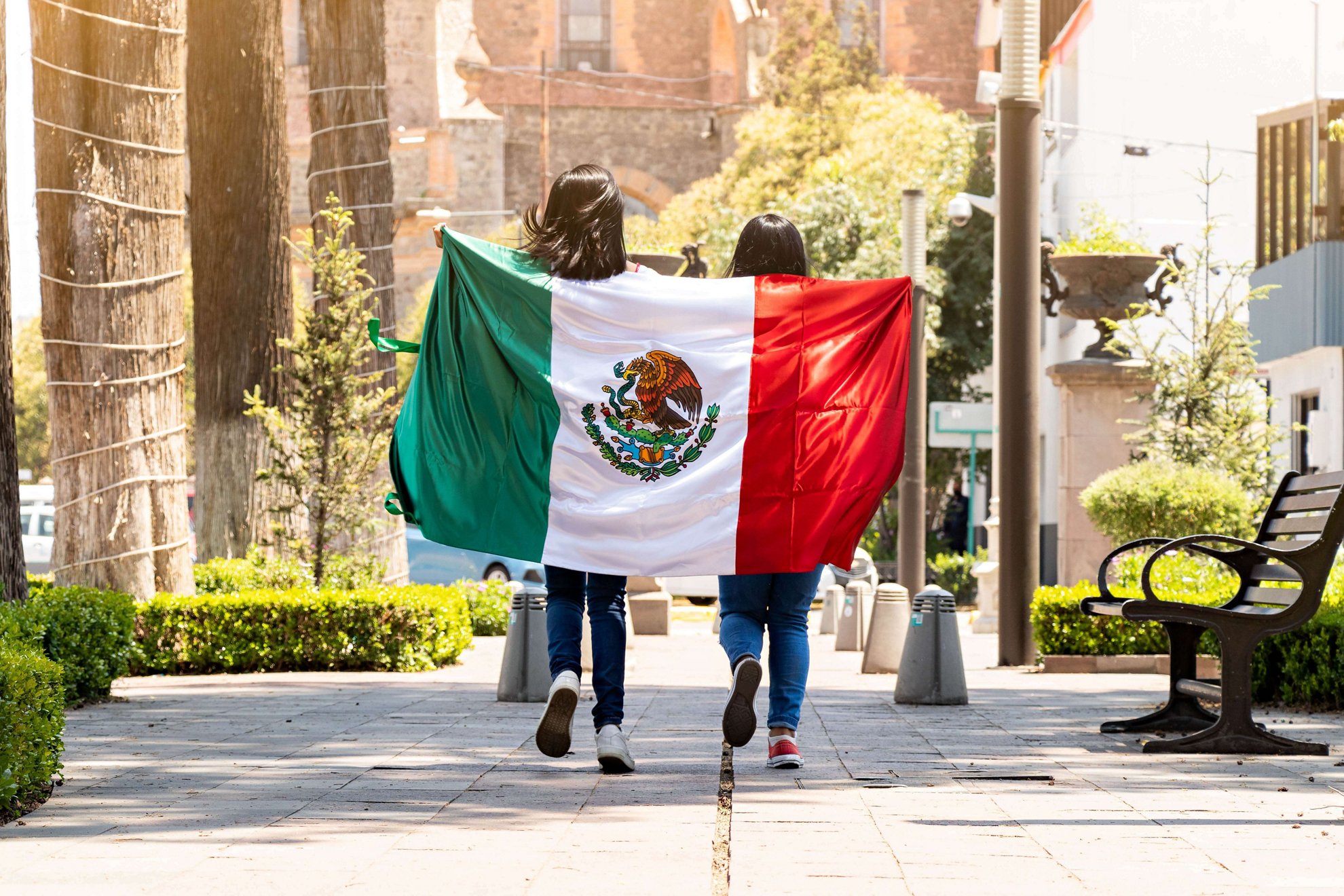
Think you know the story of the Mexican flag? Think again! The foundations for this iconic design date back to the monumental year of 1821, when Mexico emerged as a sovereign nation. Yet, over history, it has seen many changes until the final and current design was officially adopted on September 16th 1968. The cherished tricolor design of green, white, and red, adorned with the national coat of arms at its heart, has come to represent the aspirations and unity of the Mexican people. Discover how the design was created and the deep symbolism that it contains.
The creation of the Mexican flag and the birth of a national identity
The history of the design of the Mexican flag is a captivating tale that reflects the nation's struggle for independence, cultural heritage, and evolving symbolism. The victory of the arduous fight for independence from Spain sparked the creation of the first national flag in 1821, marking Mexico’s independence. Since documentation surrounding the design of the Mexican flag has been lost over history, it is not clear who was involved in the process. However, we can be sure that Agustín de Iturbide, who later became the first Emperor of Mexico, had a big part to play. It is widely believed that the leaders of the Mexican Independence Movement designed the flag in a collaborative effort to create a national identity. The result? A tricolor design, not dissimilar from Mexico’s flag today, which represented the courage, resilience, and collective spirit of the Mexican people in their quest for freedom.
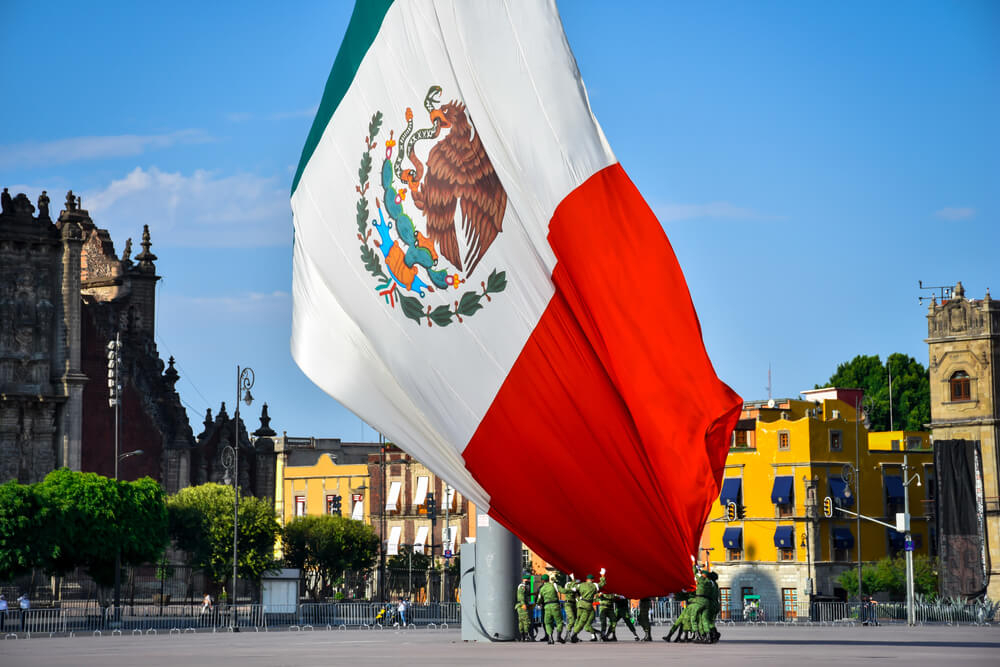
The Mexican flag is a permanent feature in Mexico City’s Zocalo Square
Symbolism and the Mexico national flag
The history of the Mexican flag is an interesting one and is made even more so thanks to its cultural significance. The iconic colors of the national flag of Mexico are full of deep symbolism. Here’s a quick rundown of what they originally represented: the green strip represents the Mexican Independence Movement, which gave birth to the nation. The white stripe represented the Catholic faith, which was the national religion at the time. The red stripe represented the Spaniards that joined in the quest for Mexican Independence. Today, those meanings have shifted somewhat. In the modern age, the green represents hope and victory, the white represents unity, and the red pays tribute to the national heroes who have fought for Mexico over the years.
The symbolism behind the Mexican flag eagle
The center of the Mexican flag is its most striking feature and what has now become the Mexico coat of arms. It’s a powerful-looking Golden Eagle, perched atop a prickly pear cactus, with a snake in its beak and talons. What’s the meaning behind this imagery? It goes back to an Aztec legend that foretold the founding of Tenochtitlan, the capital of the Aztec Empire.
In ancient times, the gods told the Aztecs that they would find the perfect place to build their city when they saw an eagle on a cactus, eating a serpent
In ancient times, the gods told the Aztecs that they would find the perfect place to build their city when they saw an eagle on a cactus, eating a serpent. They spotted such an eagle – right in the spot that is now the main plaza in Mexico City. The rest is history. The Golden Eagle represents bravery, strength, and the indomitable spirit of the Mexican people, while the snake symbolizes their ancient foes and the constant struggle against adversity.
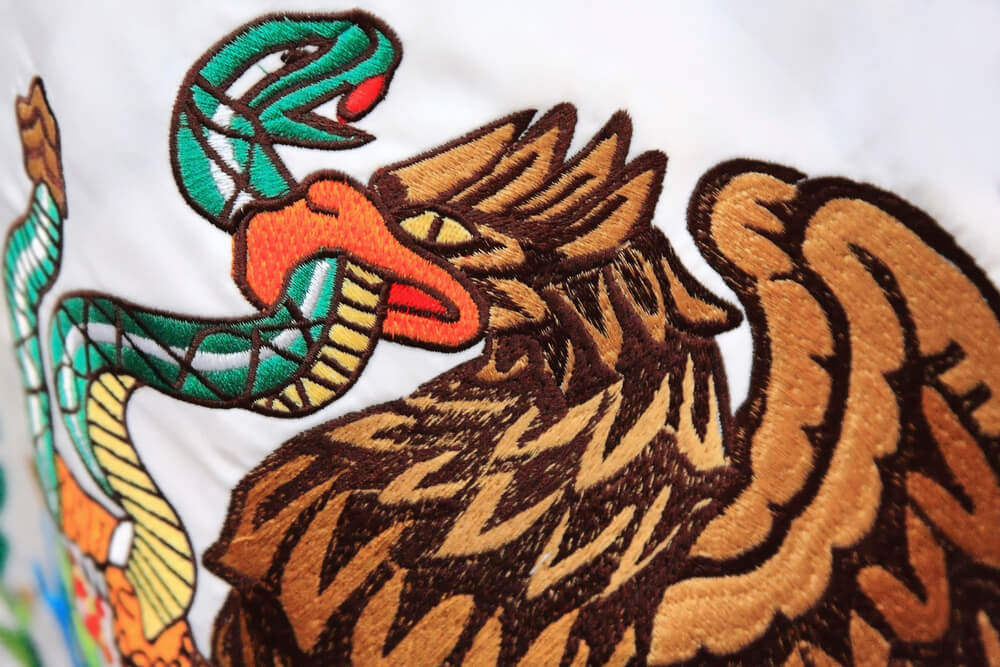
The Golden Eagle is a powerful symbol of Mexican identity
How did the current Mexico flag come to be?
Since the creation of the flag in 1821 there have been many designs for a Mexican independence flag. This sparked the official adoption of the Mexican flag design that we have today. The current design was made official on September 16, 1968, which coincided with Mexican Independence Day. This was the result of a comprehensive process undertaken by the Mexican government to establish a standardized representation of the national flag. Before this date, there were variations in the proportions and details of the flag, which prompted the need for a definitive and unified design.
El Día de la Bandera, otherwise known as Mexican flag day
Green, white, and red are a part of the Mexican experience 365 days a year – but those vibrant colors are especially in effect on February 24th, every year – El Día de la Bandera (Flag Day). The date commemorates that day back in 1821 when the old Mexico flag was first adopted, and Mexico became independent. Throughout El Día de la Bandera, Mexicans remember their national heritage, paying tribute to the country’s rich past. If you are traveling through Mexico, this day is not to be missed.
Celebrating the Day of the Flag, Mexico, and national identity
If you are on vacation in Mexico during February you will be able to experience the Day of the Flag in Mexico. For visitors and locals alike, El Día de la Bandera becomes a kaleidoscope of festivities, where the spirit of Mexico takes center stage.
Join in the celebrations throughout the country and watch as grand parades fill the streets, showcasing the magnificence of the flag and the pride of the Mexican people.
For visitors and locals alike, El Día de la Bandera becomes a kaleidoscope of festivities, where the spirit of Mexico takes center stage
You can expect everywhere you turn to be buzzing with patriotic fervor with the colors of the flag adorning every corner. Music lifts the spirits of spectators as the smell of delicious Mexican cuisine fills the air and traditional dancers twirl in vibrant costumes, their movements echoing the rhythm of the nation's heartbeat.
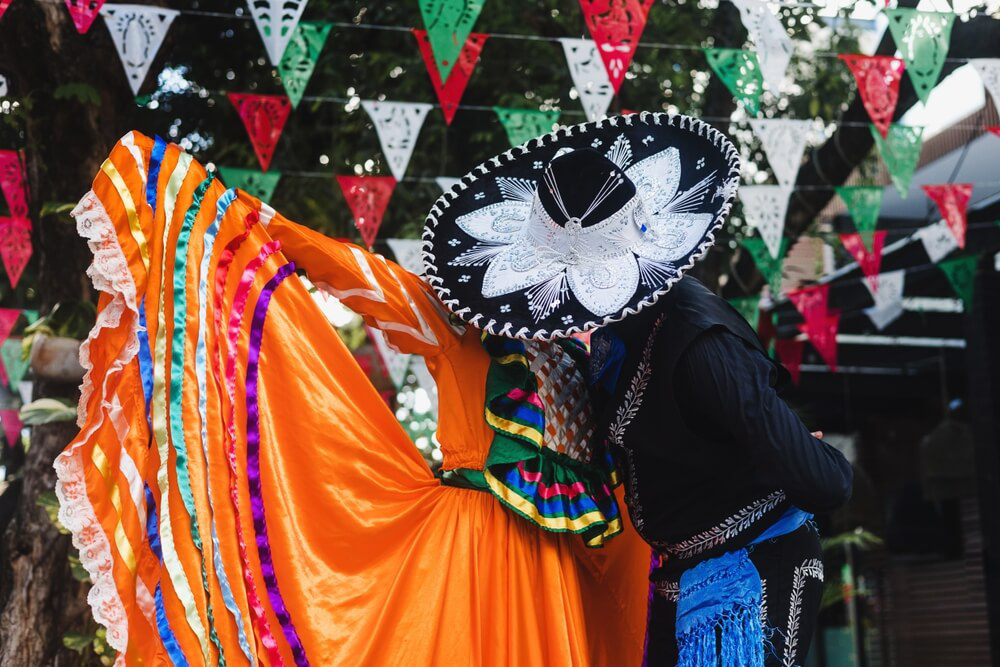
The Day of the Flg rivals Independence Day with its festivities
Red, white, and green, how the flag has become a national emblem of Mexico
While enjoying some winter sun in Mexico, you cannot help but notice that the Mexican flag continues to be a cherished national symbol even today. It evokes a sense of pride, resilience, and cultural identity and serves as a powerful reminder of the struggles and triumphs that have shaped Mexico's past, and as an inspiration for its future. From the original flag of Mexico to the modern-day design, the colors red, white, and green have remained an iconic statement of national identity.
And, they are not just found on the flag. Everywhere from traditional Mexican fashion to its delectable cuisine, these colors take center stage. Of course, you cannot enjoy a Mexican vacation without savoring some of the traditional dishes that pay homage to the flag's colors. From the vibrant green of salsa verde to the pristine white of Queso Fresco and the fiery red of chiles, every ingredient tells a story, weaving together the cultural tapestry that defines Mexico.

The red, green and white colors are staples of Mexican cuisine
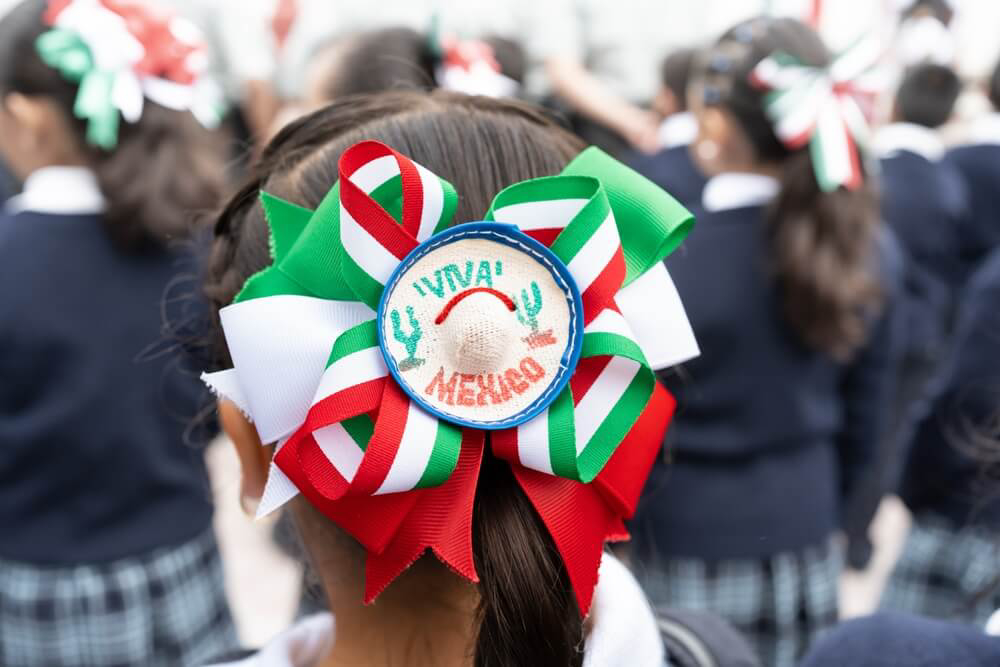








_435x320?&)

